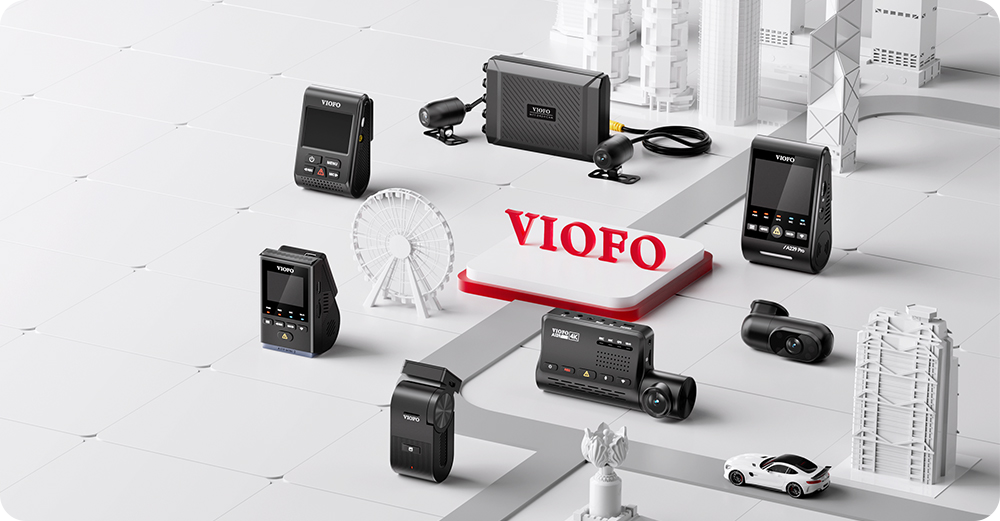Capturing clear images of car plates is crucial, especially in the event of an accident where identifying vehicles quickly can make a significant difference. Aiming at this, the HDR feature of VIOFO dashcams greatly enhances this capability. This article explores how HDR works, its importance in freezing car plates, and how it can be invaluable in capturing clear and detailed footage, even in difficult lighting conditions.
1. What is HDR?
Dynamic range refers to the total amount of light captured from a scene. HDR, or High Dynamic Range imaging, enhances this capability by capturing and presenting a wide range of light intensities in an image. This creates a greater contrast between light and dark areas, enabling clearer and more detailed pictures even in challenging lighting conditions.
2. How HDR works?
HDR technology improves image quality by combining multiple exposures to balance an image's light and dark areas. Here’s how it works:
1. Multiple Exposures: HDR captures several images at different exposure levels (e.g., normal, overexposed, and underexposed) quickly.
2. Combining Exposures: These images are combined into a single frame that retains details in the scene's brightest and darkest parts.
3. How does HDR help the VIOFO dashcam to freeze car plates?
The DOL HDR technology of the Sony STARVIS sensor is designed to capture clear, detailed footage in high-contrast lighting conditions, balancing bright and dark areas for improved visibility, especially in low-light environments.
Improved Low-Light Performance
In low-light conditions, HDR helps by combining multiple exposures to bring out details that might be lost in shadows. From the blowing pic, we can see that when the HDR feature is on, the Car plate is more readable.

Enhanced Detail in High Contrast Situations
HDR helps to balance exposure in scenes with both very bright and very dark areas, such as light on the car plate at nighttime. STARVIS sensor provides high sensitivity to capture detailed images across the entire exposure range.

After the STARVIS2 image sensor was launched with a new clear HDR feature, VIOFO kept leading the timeline of using the best tech on the dashcam build. Launching new products, such as A139Pro/A119Mini2/A229Plus/A229Pro, aiming at helping better capture car plate and image details.
Reduced Motion Blur
The dashcam is about to capture clearer details of the surrounding environment when HDR is on. With quick short time exposure, HDR can reduce the motion blur associated with moving vehicles.

Noise Reduction
Combining multiple exposures helps in averaging out the noise present in individual frames. Advanced noise reduction techniques inherent in the STARVIS 2 sensor further clean up the image before and after HDR processing.

HDR is a vital feature for dashcams, ensuring that essential details like car plates are captured clearly, even in difficult lighting conditions. By balancing bright and dark areas, improving low-light performance, and minimizing motion blur, HDR plays a crucial role in delivering reliable footage. This becomes especially valuable in situations like accidents. Therefore, choosing a dashcam equipped with an HDR feature is important.























































































































